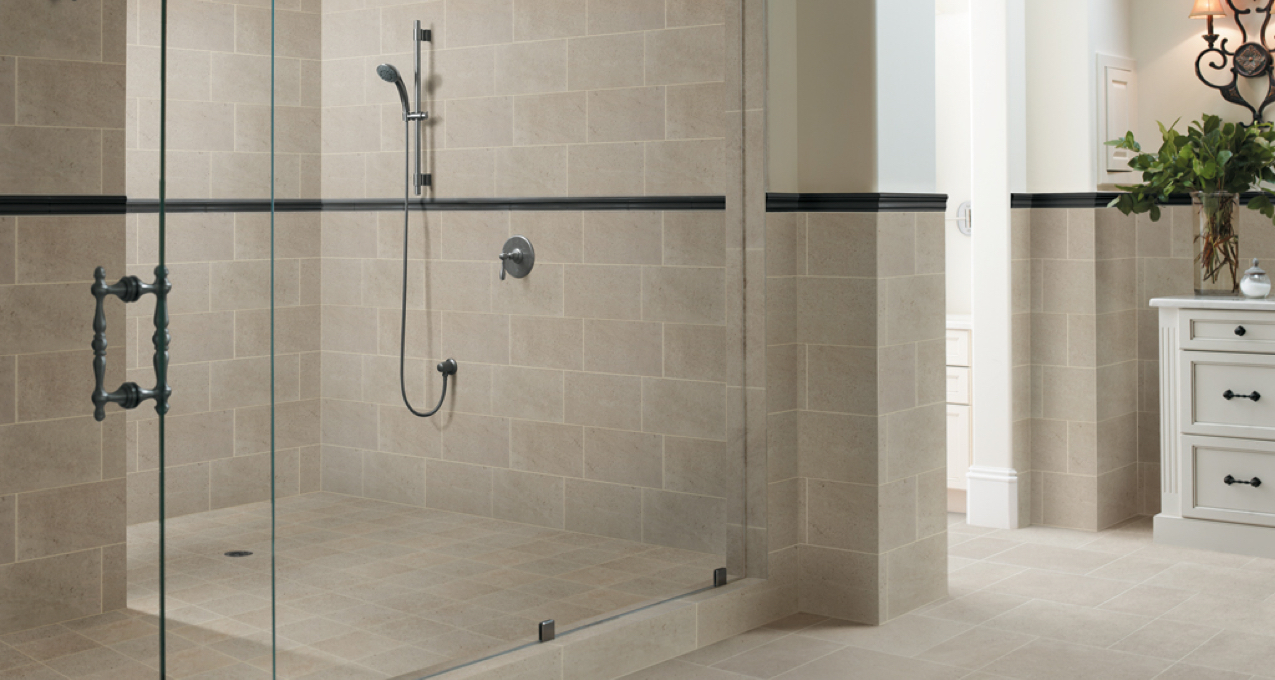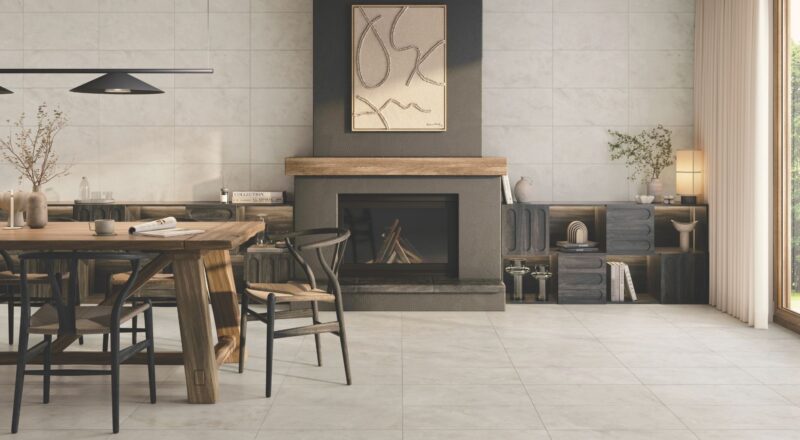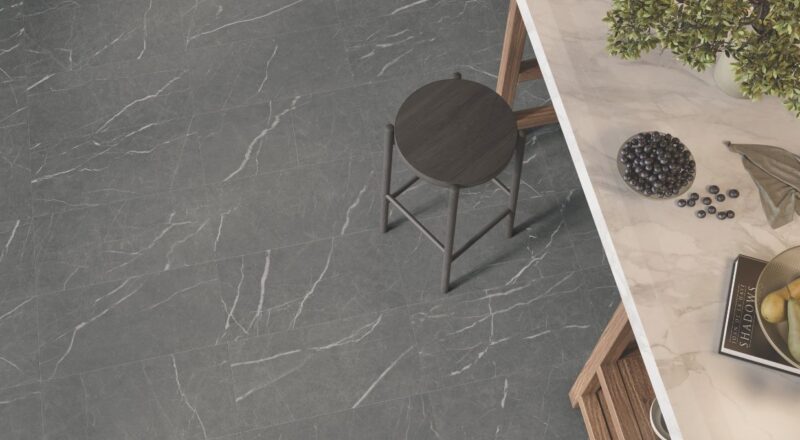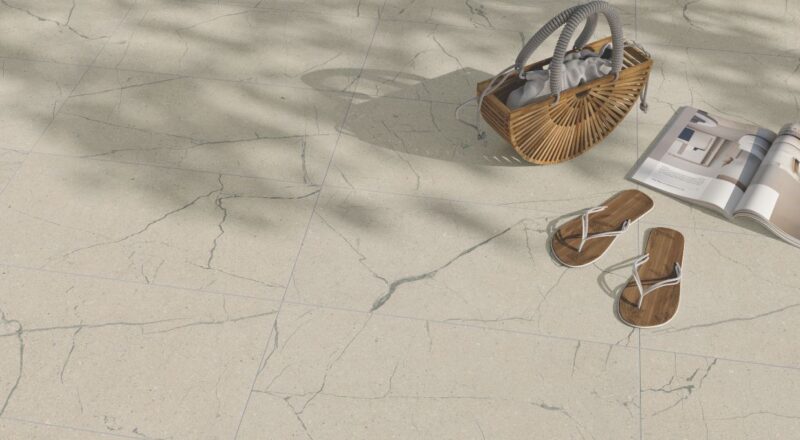Considerations for Tile in the Shower

Crossville’s Glass Blox is featured in the shower, with Color Blox completing the bathroom floor.
Tile is an ideal surfacing material for showers. However, today’s showers are often more than just box-like, functional structures; they’re spa-like retreats that can offer unique features and uses for added luxury and enjoyment. That means the tile installed should be selected with all those unique features and usage in mind.
Here are some things to consider when selecting tile for the shower.
1. Prioritize slip resistance: The shower is a wet area in which you’ll be standing, so it’s imperative that the floor surface provide slip resistance for safety purposes. Check the product information for details about recommended use to be sure the tile you love will perform properly. Likewise, slip resistance may differ from finish to finish, so–again–read product specifications thoroughly, and seek counsel from your sales rep or installer if you need clarification. You may love the look of a tile, but if it doesn’t offer the slip resistance required, you’ll have to go with an alternative.
Important to note: The tile industry is in transition to a new standard called the Dynamic Coefficient of Friction or DCOF. DCOF provides a more accurate gauge of a tile’s slip resistance during dynamic contact. Crossville has introduced this updated specification to its product materials already.
And here’s another tip… Smaller tiles, such as mosaic pieces, can heighten the slip resistance because of the increased grout line required for installation. Smaller tile sizes on the shower floor can provide an additional assurance of safety.
Crossville’s Virtue porcelain tile is used throughout this residential shower, with unpolished hexagonal mosaics on the floor for enhanced slip resistance.
2. Focus on special features: If the shower design includes features such as seats, benches, or niches for toiletries, consider what tile products will support the installation of those features functionally and in terms of desired aesthetics. For example, mosaic tile is a great alternative for curved elements, as the smaller tiles more easily install on rounded surfaces. In contrast, larger format tile may be best for uninterrupted walls in terms of ease of installation and keeping clean long term. In many instances, a mix of tile sizes and styles can achieve the needed performance and create custom looks, as well.
Here, Crossville’s Glass Blox mosaics emphasize wall niches and add a decorative touch amidst the Manoir plank-sized field tiles on the walls.
3. Don’t forget the ceiling: The shower area is constantly exposed to water and steam, and shower ceilings can fall victim to the ramifications of moisture-rich environments. Using tile on the ceiling area of the shower can aid in keeping things clean long term, while also offering a beautifully finished look for the space.
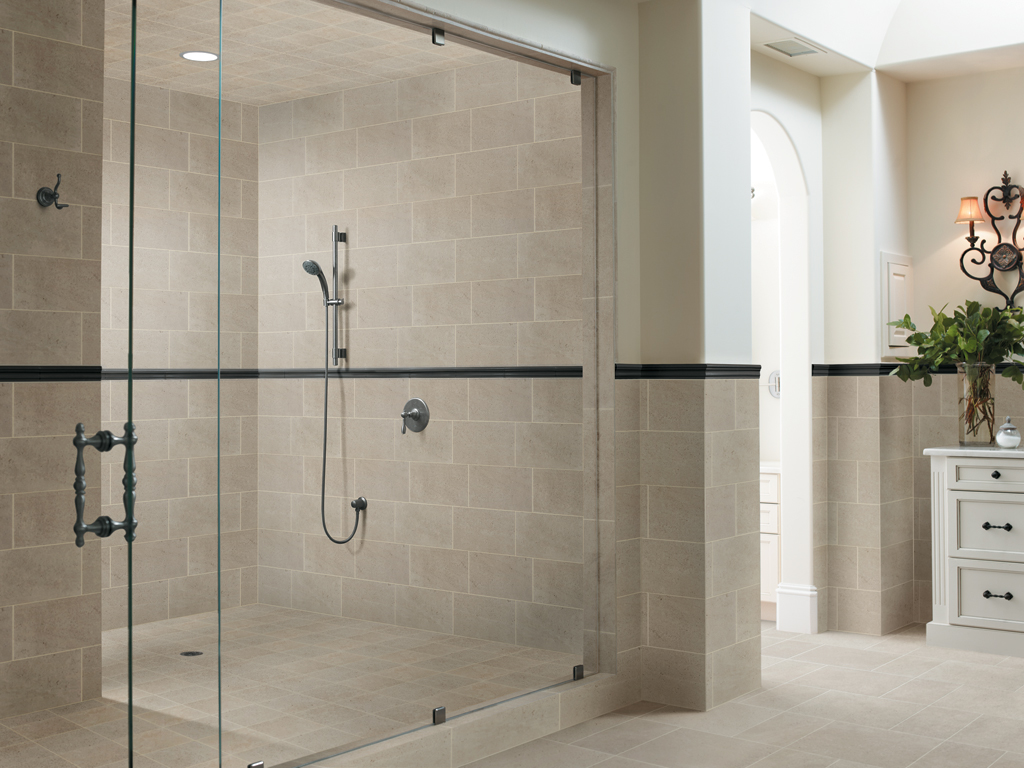
Crossville’s Limestone collection covers all surfaces–even the ceiling–in this shower.
4. Go with porcelain panels: The burgeoning category of large format, lean profile porcelain panels is a great fit for shower stall installations. With generous dimensions measured in feet, not inches, just a few panels can cover shower walls to create sophisticated looks that are simple to install and easy to maintain for years to come. Our Laminam by Crossville collections offer an array of looks to create custom looks for showers and bathrooms.
For more beautiful tile ideas for the shower, check out our Pinterest board.

